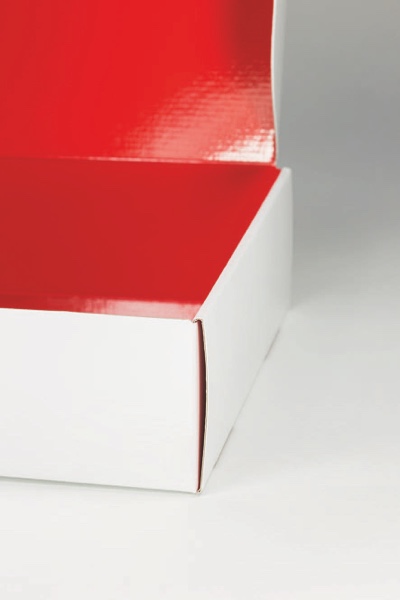Consumables
Sappis Fusion Topliner

Wednesday 10. May 2017 - Thanks to its Fusion Topliner virgin fibre line, Sappi continues to be a pioneer in white coated liners for corrugated board applications.
Given that Fusion Topliner is produced from one hundred percent bleached virgin fibres, it offers visual benefits as well as considerable strength advantages. At Interpack 2017, Sappi will be presenting new lower paper weights in its Fusion Topliner product line. Thanks to the lower weight, the grammage of 115 g/m2 delivers weight savings while retaining very high strength values. Sappis Fusion Topliner is recommended for applications where high visual quality is required, when lightweight packaging and finer fluting are desired and when flexible and customised print runs are to be produced using digital and flexographic printing. When food safety is involved, thanks to its 100% virgin fibres combined with functional barriers, a new level of safety can be achieved with Fusion Topliner.
Comparison of liners
When choosing the best liner for corrugated board applications, it pays to closely compare kraftliners, testliners and virgin fibre liners for each specific application. The surface quality and strength of virgin fibre liners clearly distinguish them from kraftliners and testliners. The bright white colour is certain to provide extraordinary colour brilliance and a great shelf impact. In many applications where the visible surface advantages are paramount, use of a virgin fibre liner is clearly the better choice. This is why a growing number of processors are using virgin fibre liners in order to impress their customers and deliver greater appeal in the retail environment. A virgin fibre liner like Fusion Topliner achieves the same material strength as test liners, with a lower weight per unit surface area. If the total costs are considered (TCO = Total Cost of Ownership), virgin fibre liners represent a real alternative to the double-coated topliners that are commonly used.
This opens up new possibilities for corrugated board applications, especially for higher quality consumer goods packaging. The increased demand for Fusion Topliner has prompted Sappi to increase its production to a second production site in Ehingen. This ensures a rapid and reliable supply of deliveries to all customers.
Post-print prints on the rise
These days most corrugated board packaging is printed with flexography. Flexographic pre-printing has historically been the dominant method. However, over the last few years, flexographic post-printing has grown considerably. Given the trend of smaller print runs and demand for very fast cycle times and customised packaging, there is growing interest in post-printing. Increasingly, liners are laminated on without printing and then printed. Small runs can therefore be produced more economically and with greater flexibility.
Essentially, in the case of flexographic post-print, it is important that the liner displays as little rippling as possible after lamination and excellent flatness. Tests have shown that, above a grammage of 115 g/m2, Fusion Topliners deliver very positive results in the post-print process regardless of the printing method selected. The materials capacity for printing without streaks is impressive. In terms of the printing results achieved, virgin fibre liners such as Fusion Topliner are delivering excellent quality with flexographic, offset and digital printing technologies.
